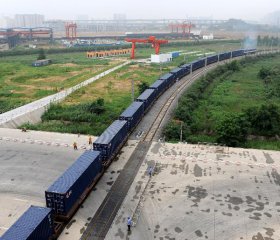
China and the Central and Eastern European countries (CEEC) have witnessed fruitful cooperation in terms of trade links, investment, finance, agriculture as well as personnel and cultural exchanges since the establishment of China-CEEC mechanism, also known as the "16+1" mechanism.
China-proposed Belt and Road initiative is linked to Europe's investment plan via CEEC, which also serves as bridge from exchanges and cooperation between Asia and Europe.
In Romania, the initiative injected vigor into coordination between the country with China, particularly in energy section.
Romania will work to implement series of cooperation projects with China on energy, infrastructure and digital technology, said Costin Borc, Romanian vice prime minister and minister of economy.
Poland is widely considered a strategically-located country in Europe.
Implementation of the Belt and Road initiative has been seen by Poland as a chance to develop the country into a logistics hub in central and eastern Europe.
The China-Europe freight trains, including those linking southwest China's Chengdu and Poland's central city Lodz and those linking east China's Suzhou and the Polish capital, brought new opportunities for land trade.
Serbia also considers itself an important partner for China in putting the initiative into practice.
Zarko Obradovic, a Serbian coordinator of the summit of China and 16 countries in the region, said the Belt and Road initiative is not just the exchange of goods, economy, money, but also the exchange of cultures, languages, values that motivate mutual understanding.
















Latest comments